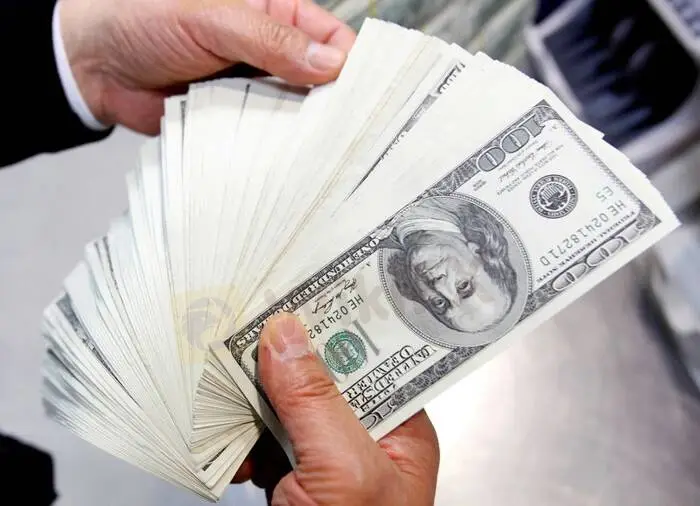简体中文
繁體中文
English
Pусский
日本語
ภาษาไทย
Tiếng Việt
Bahasa Indonesia
Español
हिन्दी
Filippiiniläinen
Français
Deutsch
Português
Türkçe
한국어
العربية
Safe-haven yen, Swiss franc rise on Omicron fears, Fed policy uncertainty
Abstract:The dollar ticked higher on Friday amid a broadly calmer tone in markets as fears over Omicron’s impact eased, but currency moves were muted ahead of a key U.S. payrolls report that could clear the path to earlier Federal Reserve interest rate hikes.
The safe-haven yen and Swiss franc gained on Friday as global equities and bond yields fell on fears about the spread of the Omicron variant of COVID-19, which has resulted in renewed restrictions in parts of the world, and concerns about possible aggressive action by the Federal Reserve to curb surging inflation.
“Volatility remains the norm in recent weeks amid changing outlooks on monetary policy, inflation worries, and now the Omicron uncertainties,” Action Economics said in its latest blog on the market.
The dollar reversed gains to trade little changed on the day after the release of a weaker-than-expected U.S. jobs report, which still included positive revisions for previous months and solid details about the labor market. Market participants viewed the payrolls report as not really altering the Feds plan to accelerate tapering of its asset purchases and possibly raise interest rates multiple times next year despite the Omicron threat.
U.S. non-farm payrolls increased by 210,000 jobs last month, the Labor Department reported. Economists polled by Reuters had forecast payrolls would rise by 550,000 jobs.
October‘s job growth was revised up to 546,000 positions from the initial estimate of 531,000 and September’s jump was increased to 379,000 from 321,000, for a net 82,000 two-month gain.
The unemployment rate also dropped to 4.2% from 4.6%, the lowest level since February 2020.
“Despite todays mixed payrolls report, we think the bigger picture remains that sustained inflationary pressures in the U.S. are likely to support faster policy normalization by the Fed and keep the dollar strong,” said Jonathan Petersen, markets economist at Capital Economics.
Federal funds rate futures, which track short-term interest rate expectations, late on Friday priced in a 74% chance of a quarter-percentage-point increase in the Feds benchmark overnight interest rate by May 2022. That probability was as high as 86% following the release of the jobs report.
In afternoon trading, the dollar index was up slightly on the day at 96.146 . The greenback will end broadly unchanged on the week despite rallying last week to its highest level since July of last year.
Petersen of Capital Economics said the dollar‘s value reflected the “offsetting effects of rising short-term yields in the U.S., particularly after Chair (Jerome) Powell’s (hawkish) comments to Congress on Wednesday, and falling long-term yields amid growing concerns about the Omicron variant.”
The euro was up 0.1% at $1.1307.
Against the yen, the dollar dropped 0.4% to 112.75 yen. Versus the Swiss franc, the dollar slid 0.2% to 0.9179 francs.
Also on Friday, the U.S. Treasury released its semi-annual currency report, which singled out Vietnam and Taiwan as countries that continued to exceed its thresholds for possible currency manipulation and enhanced analysis under a 2015 U.S. trade law. However, it refrained from formally calling them manipulators.
The currencies of the countries mentioned – the Vietnamese dong and Taiwanese dollar – showed little reaction to the report.
In emerging markets, Turkeys volatile lira edged near to its record low on Friday, triggering direct central bank intervention to sell dollars. The U.S. dollar was last up 0.6% at 13.745 liras.
Disclaimer:
The views in this article only represent the author's personal views, and do not constitute investment advice on this platform. This platform does not guarantee the accuracy, completeness and timeliness of the information in the article, and will not be liable for any loss caused by the use of or reliance on the information in the article.
Read more

Japanese Yen Eases on BoJ Dovish Statement
The Japanese Yen eased on Wednesday morning after the BoJ Deputy Governor indicated that the Japanese central bank would not raise interest rates if global markets remained unstable. This statement has calmed the market and unwound concerns about Yen carry trades. Meanwhile, the dollar has regained strength, with the dollar index (DXY) climbing above the $103 mark.

Powell’s Dovish Tone Hammers Dollar
Federal Reserve Chair Jerome Powell indicated that recent U.S. economic data suggest inflation is returning to a downward trajectory. However, he emphasised the need for more evidence before the Fed considers shifting its current monetary policy. Consequently, the dollar eased from its recent highs, while U.S. equity markets, buoyed by the dovish tone, saw the Nasdaq and S&P 500 reaching all-time highs.

DOLLAR DOWN, BUT NEAR YEAR HIGH AS INVESTORS AWAIT FED’S NEXT TAPER MOVE
The dollar was down on Wednesday morning in Asia but held near a one-year high amid rising speculation that the U.S. Federal Reserve will announce the beginning of asset tapering in November 2021, followed by potential interest rate hikes by the middle of 2022.

Dollar rises as virus restrictions hurt risk sentiment
The U.S. dollar edged higher against a basket of currencies on Thursday, as increased restrictions in parts of the world to contain the spread of COVID-19, including the new Omicron variant, tempered investors' appetite for riskier currencies.
WikiFX Broker
Latest News
Top 10 Trading Indicators Every Forex Trader Should Know
ASIC Sues Binance Australia Derivatives for Misclassifying Retail Clients
WikiFX Review: Is FxPro Reliable?
Malaysian-Thai Fraud Syndicate Dismantled, Millions in Losses Reported
Trading frauds topped the list of scams in India- Report Reveals
YAMARKETS' Jingle Bells Christmas Offer!
AIMS Broker Review
The Hidden Checklist: Five Unconventional Steps to Vet Your Broker
Revolut Leads UK Neobanks in the Digital Banking Revolution
Fusion Markets: Safe Choice or Scam to Avoid?
Currency Calculator


